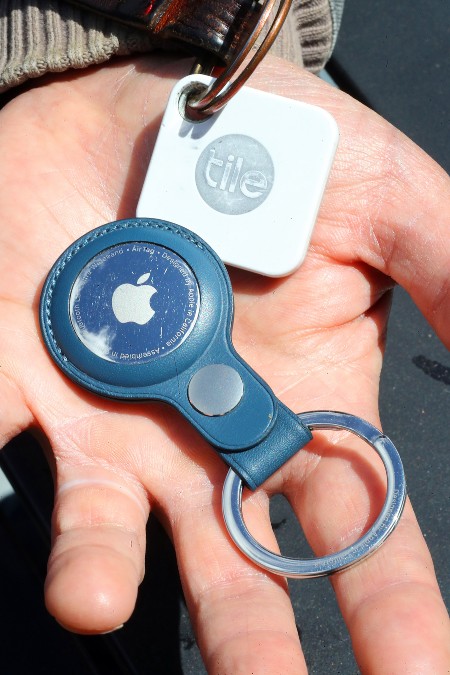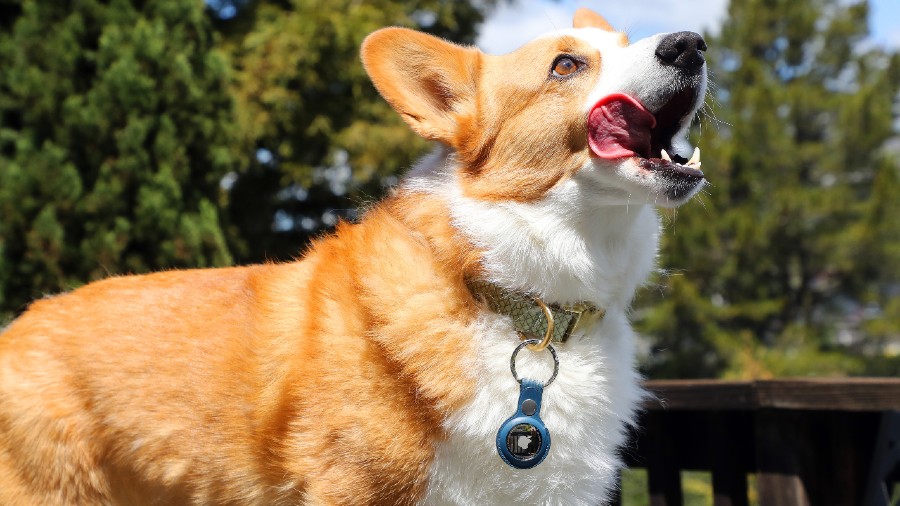On the outside, Apple’s new AirTag looks like a ho-hum product that we have all seen before. It’s a disc-shaped tracking gadget that can be attached to items like house keys to help you find them. But inside, the story gets far more interesting.
The AirTag is one of the first consumer electronics to support a new wireless technology, ultrawideband, which lets you detect precise proximity between objects. Using ultrawideband, your iPhone can sense whether an AirTag is an inch or dozens of feet away from it. Its app will even show an arrow pointing you in the direction of the AirTag. That’s far better than other trackers that rely on Bluetooth and can only roughly guess an item’s proximity.
Because of its pinpoint-precise ability to transfer data quickly between devices, ultrawideband could become the next wireless standard that succeeds Bluetooth. It could lead to better wireless earphones, keyboards, video game controllers — you name it.
I tested Apple’s $29 AirTag for about a week. I used the tracker to find house keys, locate my dogs and track a backpack. I also ran similar tests with Tile, a $25 tracker that relies on Bluetooth and that has been around for about eight years. I found that ultrawideband was far superior to Bluetooth for finding items.
When you use ultrawideband to find a tracker, you send a ping to the tag, and the tag bounces a ping back to your phone. The amount of time it takes for the ping to come back is used to calculate the distance between the two objects.
But when you use Bluetooth to find a tracker, your phone is pushing out a continuous signal in search of it. The farther you move from the tracker, the weaker the signal gets, and the closer you move toward it, the stronger it becomes. This technique is used to tell you roughly how far away you are from the tracker.

NYTNS
Tile vs AirTag
Tile works with both iPhones and Android phones. Open the Tile app, select an item and hit the “find” button. The app will look for the Tile and send a signal to connect, after which it makes the tracker play a melody. If the signal connection is weak, it will tell you to move around until the signal gets stronger.
If your phone can’t find a Tile because it is outside its range, you can put it in “lost mode”. The tracker will search for other Tile owners who have granted the Tile app access to their location to help find other people’s lost items. If a Tile-owning Samaritan is near your Tile, that person’s device will share its location with the Tile network, which will show where the item was last spotted on a map.
AirTag works with iPhones both new and old.
To find an item, you open the Find My app, select an item and tap Find. The app will form a connection with the AirTag. The app combines data gathered with the phone’s camera, sensors and ultrawideband chip to direct you to the location, using an arrow to point to it. Older iPhones can track AirTags with Bluetooth using a method similar to Tile’s.
When an AirTag is outside the range of your phone, you can put it in lost mode and allow other Apple phones to find the AirTag to help you see where the item was last spotted on a map.
Even though the AirTag is an impressive demonstration of ultrawideband technology, that doesn’t make it the best tracker for everyone. I would give an AirTag to an iPhone owner. But I would give a Tile to a person with an Android phone.
Because of its greater efficiency at transmitting data, ultrawideband could make future wireless devices immensely better. As an example, think cord-free earphones that connect instantly, use very little battery and sound as good as wired ones.
That sounds much cooler than finding house keys.
NYTNS











